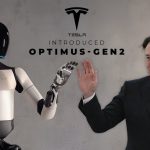
Chip designer NVIDIA Corporation’s (NASDAQ:NVDA)$40 billion acquisition announcement of British design house Arm Ltd. started to make headlines in the tech industry after it was announced. NVIDIA, which designs graphics processing units (GPUs) for consumer and enterprise use, is expected to gain a significant stronghold in several industries due to the near-ubiquity of the use of Arm’s designs in a multitude of platforms.
This reality was also o NVIDIA Chief Executive Officer Mr. Jen-Hsun Huang’s mind as he and Arm C.E.O. Mr. Simon Segars took to a fireside chat at Arm DevSummit that kicked off virtually today. The bulk of the chat focused on Mr. Huang as he and Mr. Segars made their first joint public discussion after the deal was announced last month for a $40 billion price tag.
NVIDIA CEO Promises to Protect Arm’s Business Model Post-Acquisition
The chat was hosted by Mr. Rene Haas, who is the President of Arm’s Intellectual Property Group. Over its course, the executive focused his questions on a variety of topics, from Arm’s business model to NVIDIA’s key areas of focus post-acquisition and the impact of the deal on existing Arm products, such as its Mali GPU lineup.
As he started off with one of the most pressing concerns raised after the deal was made official, Mr. Haas asked Mr. Huang about his company’s intentions for maintaining Arm’s existing business model. In response, NVIDIA’s C.E.O. expressed his long-held desire to simplify and extend his company’s intellectual property (IP) in a similar and collaborative manner with the design house. His full response was:
I love Arm’s business model. As you know I think the genius of Arm was the invention of the super energy efficient CPU architecture combined with this business model of licensing and having the wisdom of creating this vast ecosystem of computer makers and chip makers in just about every industry on the planet. That vision took three decades to realize – and I love the idea of that, I love the business model, I love the ecosystem that’s been built.
And so, we have every intention of protecting it, not hurting it and growing this business model. In fact, I want to add to this business model, You know one of the things I value about Arm is this network of partners and the ability of Arm to take what is very difficult to design and turn it into soft IP products that people could use. And it’s something I’ve always wished that we could do. You know take the NVIDIA architecture and put it through Arm’s networks so that companies of all different sizes and shapes and different industries could take advantage of our IP and allow us to extend and accelerate the computing vision that we have to all the industries. So I’m super excited about everything.

Following up on this, Huang was questioned on the acquisition’s potential impact on Arm’s GPUs, especially since NVIDIA also develops the products. Haas also asked the NVIDIA executive on his thoughts about the deal’s effects on open-source software development:
Huang: “We’re gonna keep doing it. We’re gonna give customers as many choices as possible. Every customer is not trying to build the same type of system and some of the customers would probably want to design their own. So we want to give customers in the market as many opportunities to innovate and differentiate as possible. So we’re going to continue to advance.”
Commenting about software developers:
“You know that software developers want several things. The first thing they want is a computing platform with a lot of capabilities so that they can write amazing software. That’s the first thing. The second thing is that they need the richness of the tools and the libraries, not to reinvent everything, and to be able to be as productive as possible. But the most important thing software developers want is they want a platform with large reach that is vibrant and growing.
And this is what we’re gonna do with our combination. We’re gonna combine two of the most vibrant, most exciting computing ecosystems in the world. The largest in world, the largest one of course, Arm’s ecosystem and one that is developing very quickly with artificial intelligence, with NVIDIA’s platform. And so we’re gonna be able to bring the NVIDIA developers to the reach of the Arm ecosystem and we’re going to add to the Arm ecosystem this exciting capability called accelerated computing and AI (artificial intelligence and so the developers are going to love it. That’s ultimately what they wish to have – a great platform with rich tools but most importantly that has to be vibrant and rich and growing.”

Artificial Intelligence, Platform Diversity and Architectural Strength Key Factors In NVIDIA’s Decision To Acquire Arm
The focus of the conversation then shifted to artificial intelligence, which many believe will play a crucial role in the deal. NVIDIA’s C.E.O. confirmed this as he shared his enthusiasm for AI:
“Yeah this is really exciting. You’ve heard Simon talk about this and I’ve heard him publicly talk about this for years. You know to happen. Some people call it edge, some people call it IoT. The confluence of a couple of technologies are making it possible now for us to create autonomous intelligent computers, machines that are doing skills all over the world. It could be driving a car, driving a truck, it could be moving crates around in a warehouse, it could be doing fast checkout, it could be keeping a city safe, keeping traffic flowing. It’s almost as if the city is smart, it’s almost as if the warehouse is smart, it’s almost as if the retail store is smart. Now the software that makes them smart is called artificial intelligence and no human knew how to write that software! Only until recently, we’ve made it possible for us to create computers, develop softwares that write the softwares.
Now that the software is ready, now that the software is possible, we’re reminded of the fact we’re computer engineers and computer science enables new markets but it’s up to the software developers that create the growth. Well for the very first time the engine of that growth is going to come from a piece of software written by a machine. Machines can write software a lot faster than we can, we now know that machines can write software that we can’t write. And so for the very first time it’s now possible to imagine a world where we’re creating these autonomous systems and computers all over the world, it’s helping society to perform all kinds of tasks the software is being written by another computer and so the expansion of computing over the next decade is going to be far far greater than the expansion of computing over the last decade.
That’s the exciting part, that’s the reason why the combination makes so much sense. NVIDIA has deep artificial intelligence capabilities, we know how to write the software of artificial intelligence. No computing platform has the reach of Arm, and so the combination I think is incredibly powerful that way.”
He then proceeded to sum up his company’s focus on Arm over the course of the last year:
“So last year we put the first brick in the ground to bring NVIDIA’s computing to Arm. It’s called CUDA, NVIDIA’s accelerating architecture to Arm. That’s a big commitment and the reason for that is you know once you support software you can’t stop. That’s the reason why computing platform companies that understand that consistency that neutrality, trust as part of a computing platform is so vital. Once you decide to make a commitment to an ecosystem you can’t take it back. It took us several years to come to the conclusion that Arm is finally at a point where it’s going to evolve past mobile devices [that] it’s going high-performance computing, into the cloud, into the edge, into autonomous machines and that we ought to make the first commitment to bring our architecture to the platform and the response has been fantastic. All over the world, the response has been fantastic.
So over the last year, we’ve been working on several things, four pillars, it goes like this. The first pillar of it is that NVIDIA is going to bring both our GPU as well as our DPU, our networking processors and all of the system software all of the acceleration layers and all of the acceleration stacks to Arm. That, if you will, will complete the Arm platform. The CPU, the GPU, the DPU in combination will complete a general computing platform. Number two, we’re gonna bring what NVIDIA is famed for which is really domain-specific acceleration libraries to the architecture. We have three major NVIDIA specific applications. One of them is NVIDIA HPC. This is our quantum chemistry, our molecular dynamics, our fluid dynamics you know all of our scientific computing algorithms. There are a thousand or so solvers all over the world accelerated by CUDA we’re gonna bring all of that to the architecture. The second is NVIDIA AI. All of the frameworks, all of the deep learning algorithms, different varieties of architecture we’re gonna bring all of that from training to inference.

Third, we’re gonna bring NVIDIA data analytics called NVIDIA RAPIDS, our data analytics, data science platform. That’s the second pillar, all of our acceleration libraries. The third pillar is going to do so in all four of the major four computing platform. High-Performance Computing which is a distributed multi-GPU, multi-node, cloud computing which is a disaggregated, compassable container microservices architecture, to the edge which is essentially a secure autonomous datacenter in a node. The edge, robotics and lastly personal computing which includes all of our graphics, and all of our imaging. So these four platforms we’re going to support. We have all of them running at NVIDIA. And the last pillar is the ecosystem. We’ve selected three partners as a starting point. First is FUJITSU with their A64 FX CPU which is doing fantastic in supercomputing and just kind of shows you the range of the Arm microarchitecture from embedded controllers which is tens of milliwatts to the fastest supercomputer on the planet.
That kind of tells you the power of this architecture, during a time when Moore’s Law has ended. There’s nothing left to squeeze out of this system through physics and so leaving the only way to do it through architecture. And so we’re going to do it for Fujitsu, we’re going to do it for Ampere the startup microprocessor company and then with Marvel with their thunder architecture and Murphy’s company they’re doing really great. . . You have processors, you have systems, you have libraries and you have an ecosystem and we’ll support it for as long as we shall live.”
After Huang commented on the company’s $52 million supercomputer in Cambridge that NVIDIA announced at its GTC Conference yesterday, Huang and Segars were asked about their opinions on the deal clearing regulatory hurdles. Groups in the U.K have feared that the acquisition might hurt the country’s national interest, and several Chinese academics have also expressed their skepticism about it gaining the East Asian country’s approval.
At this front, both expressed confidence in the acquisition securing regulatory approval. Yet as opposed to his detailed earlier replies, NVIDIA’s co-founder had relatively fewer words to share on this affair. He stated his belief that once authorities fully grasp the complementarity of the two companies, they will see the benefits of the acquisition moving forward.
According to him:
“It’s true, it’s true. Somebody just said to me the other day that you paid an ‘arm’ and a leg and I thought that was clever [looks at Segars and laughs]. And true. But worth every penny and more. I am confident, we are confident it’s going go through and the reason for that is because as soon as we explain the rationale of the transaction and our plans the regulators around the world will realize that these are two complementary companies You know a lot of companies they just know they are two technology companies coming together, they don’t really understand what is it that we do.
So the first thing is to explain what we do, where we belong in the ecosystem [once we do this] people will realize we’re complementary companies; that two companies being complimentary when combined will create new innovations which is good for the market, drives innovation forward it’s good for customers. And when they realize that we love the business model, we’re going to protect the business model, we’re going to create and continue to nurture this neutral, committed, consistent, trusted platform so that our ecosystem can continue to flourish and even grow, I think when people realize that, they’re going to be really quite excited about that.”
All-in-all, NVIDIA seems to be extremely confident about having made the right decision at the right time when it comes to acquiring Arm. The design firm has expanded its presence in the enterprise segment, as companies such as Amazon use its design to build products for the sector. As Arm’s DevSummit progresses, companies including the Seattle-based retail and computing giant and Microsoft Corporation will also present their collaborations with Arm in the arena.
The post NVIDIA Chief Wants To Target Arm’s Customer Networks & Retain Existing Business Model by Ramish Zafar appeared first on Wccftech.
Powered by WPeMatico



